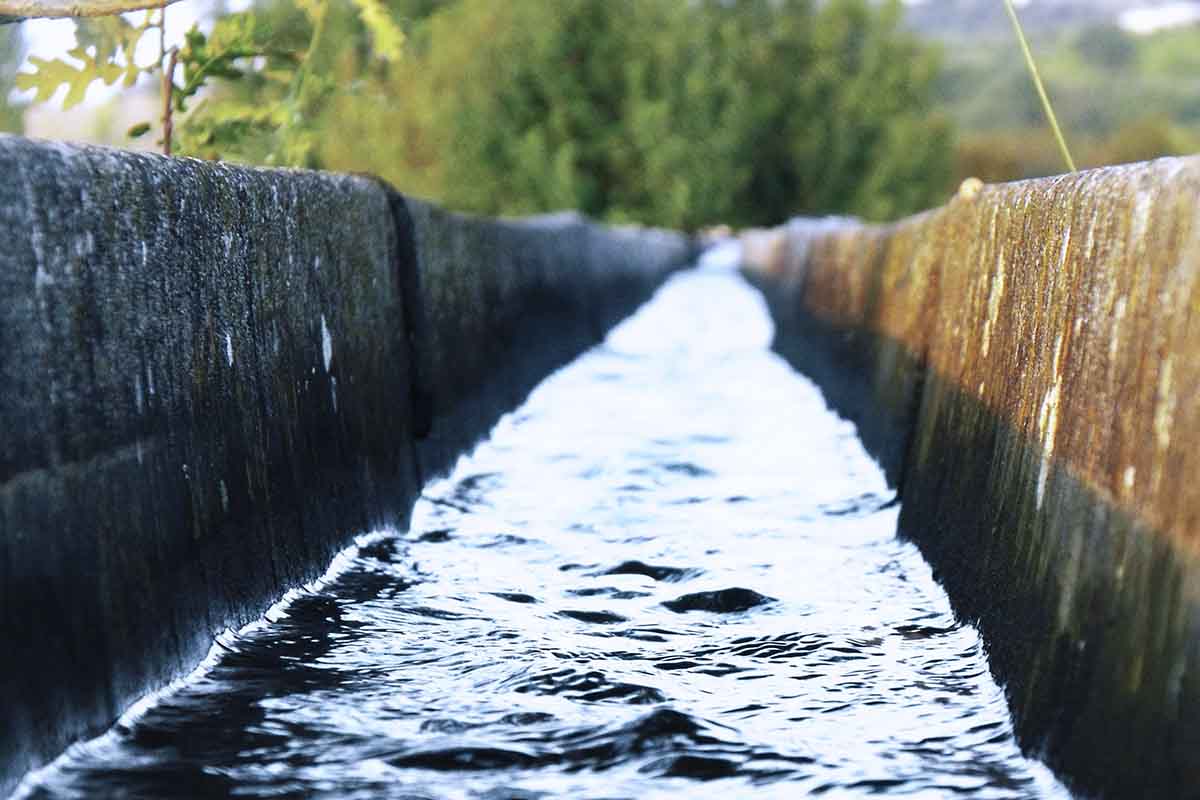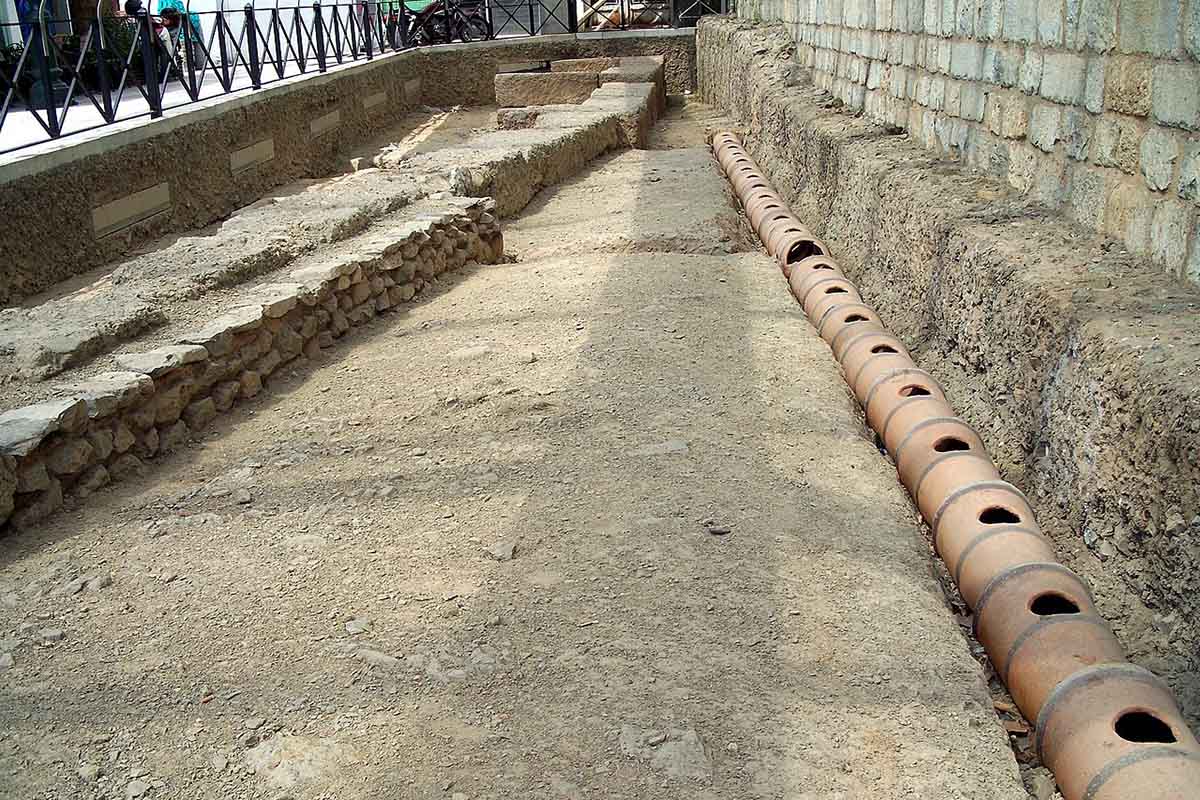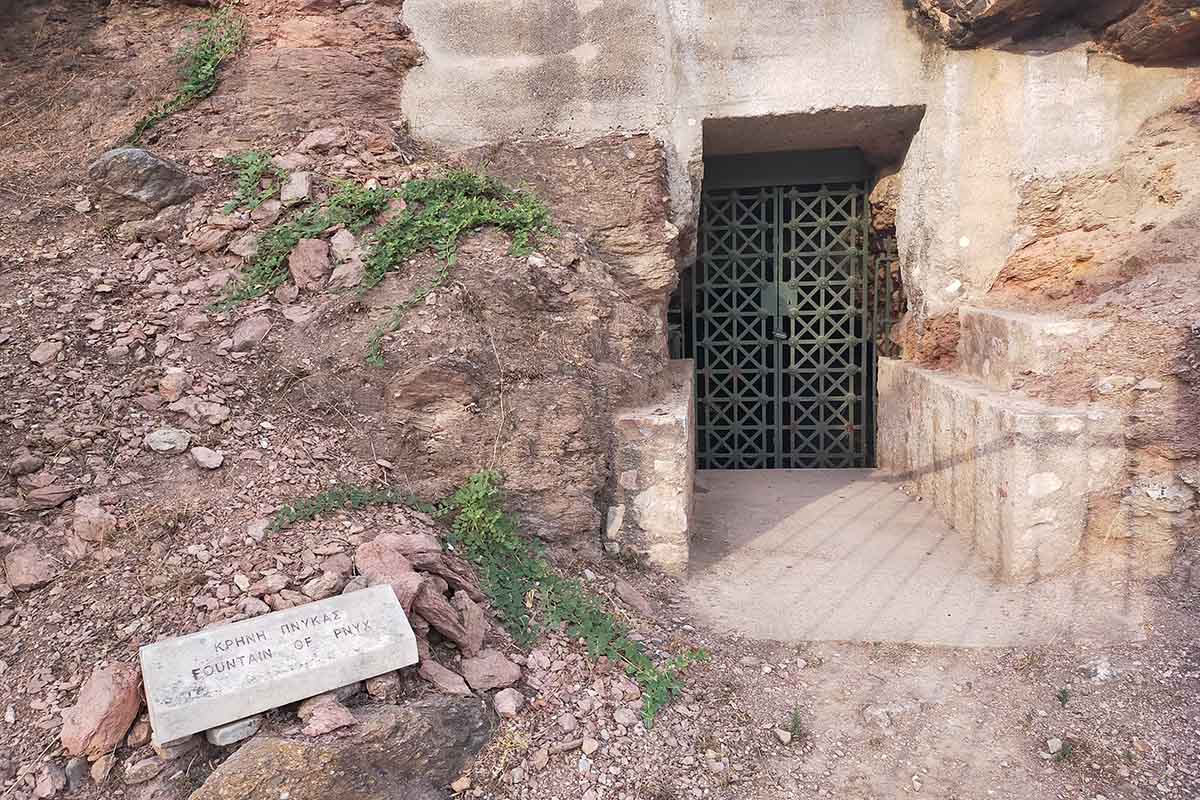
The ancient Greek system of plumbing that still exists next to the Parthenon
09 of November of 2023
Legend has it that Mount Hymettus, located just a few kilometers from the center of Athens and famous for its ancient gray marble quarries, once hid fabulous gold mines. A group of Athenian citizens are said to have gone there to find out if this was true, but instead, they found huge ants ready to fight to defend their territory.
What the Athenians did find on the slopes of Mount Hymettus were water sources that they channeled to bring to the city. In the 6th century BC, the city of Athens created a vast, complex system for transporting water to all of its neighborhoods and every corner of the city. Today, there are still remains of this piping system, large tanks, and fountains that can be seen at points from Syntagma Square to Acropolis Hill.
The water Athens needed
Many ancient civilizations rose up on the banks of great rivers. Egypt laid out fields and built the pyramids in the Nile Valley, while Mesopotamia sprouted between the Tigris and the Euphrates. The evolution of Greece, however, was shaped by limited and very often scarce water resources.
The region of Athens has gone through episodes of water scarcity throughout its entire history. In the 7th century B.C., for instance, many of the wells were abandoned. The fact that there were so many (practically all of which have records) leads archaeologists to two possible scenarios: either there was a war, or an intense drought dried up the water from the wells. If they were dry, it no longer made sense to keep them up.

Water channeling. Burak Tonç (Unsplash)
This reality prompted the residents of ancient Greece to study the flow of rivers and the behavior of rain in order to try different techniques and imagine solutions to retain and dispose of water. So when the tyrant Pisistratus rose to power in the city, Athenians already had decades, even centuries of technical experience in this field.
Under the rule of Pisistratus, in the first half of the 6th century B.C., Athens built a complex system that began at Mount Hymettus and aimed to allow water to be shared fairly among all the city’s neighborhoods.
More than 9,500 meters of tanks and pipes
The supply system transported fresh water from the surrounding springs to the city in a network of pipes (mostly underground) that ran for some 9,500 meters. These pipes were formed by cylindrical clay pieces that were subsequently coated and sealed. However, these pieces had holes in the top to allow for cleaning and maintenance.
These pipes were set up in underground tunnels at an incline to allow the water to flow at a constant rate. While most of the aqueduct was dug at a depth of one and a half meters, the infrastructure reached up to 14 meters below the surface in some areas.

Remains of the Pisistratus aqueduct today in Syntagma (Athens). Badseed (Wikimedia Commons)
This system also had large tanks dug into the rock, wells, and cisterns; this was because the Athenians used the springs as well as the groundwater and rainwater. As historian Christaki M explains in his research on the relationship between the water supply and the development of the city of Athens, the Greek management system from 25 centuries ago was similar to the current concept of sustainable development.
At the foot of the Acropolis
Acropolis literally means “high city.” It is the word that the Greeks used to name the highest part of their cities, where they built public buildings and temples for their gods. The one in Athens is located 156 meters above sea level, and to get to it, you have to climb a hill that separates the modern city from temples like the Temple of Athena Nike and the Parthenon.
However, you don’t have to get to the top to find remains that will take you back to bygone times: there are visible remains of this complex system all along the Acropolis Hill. Many of the pipes that transported water to Athenians thousands of years ago are dug into these same rocks, which are made of porous limestone.

Fountain carved into the rock at the foot of the Acropolis. Tania Alonso
In fact, several cisterns from the 6th century B.C. have been found inside the Acropolis, along with fountains and several drainage channels that could hold enough water to ensure the supply for several months. Many of them were decorated with mosaics.
The construction of water-related infrastructures continued during the following centuries and spread to all parts of the city. Throughout history, many of these infrastructures remained hidden, and others were given different uses. During World War II, the Fountain of Pnyx (one of the ones closest to the Acropolis that still remains) was sealed with cement. Relics were hidden inside to ensure their protection during the conflict.





There are no comments yet